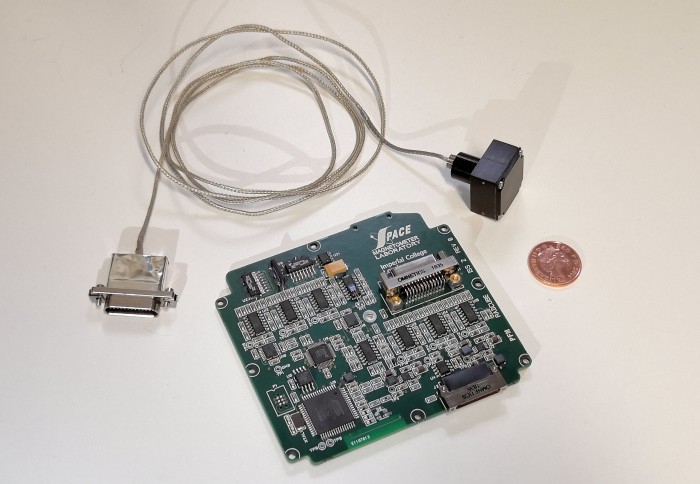Imperial completes new space mission instrument despite lockdown challenges

Staff from the Department of Physics have delivered a miniature instrument for a new kind of European Space Agency space weather monitoring mission.
The RadCube mission is designed to test new technologies for monitoring space weather – the variations in the solar wind coming from the Sun, which can disrupt and damage satellites and infrastructure on Earth.
It's a real testament to the ability, and tenacity, of the team to work against such challenges to get the job done. Dr Jonathan Eastwood
RadCube is a ‘cubesat’ mission, which are designed to use smaller, cheaper and lower-power components than traditional space missions. The technologies in RadCube, if proven to work well in space, could be used in a range of future missions, such as constellations of multiple cubesats working together to measure the solar wind. CubeSat spacecraft are typically constructed upon multiples of 10 × 10 × 10 cm cubes, and RadCube is made up of three of these base units.
Imperial academics and technicians from the Department of Physics this week delivered a miniature magnetometer to the project in Hungary – an instrument that measures the interactions between the Earth’s magnetic field and that carried by the solar wind, which is a major component of space weather monitoring.
MAGIC monitoring
The individual detectors on their instrument – called MAGIC (MAGnetometer from Imperial College) – are less than a millimetre in size, and the total instrument sensor is only four centimetres cubed. This is in comparison to the sophisticated magnetometers the lab builds for large and expensive space missions, such as the recent Solar Orbiter mission and the upcoming JUICE mission, which are much larger and weigh a couple of kilograms.
The MAGIC instrument also uses less than a watt of power, compared to up to 20 watts for the larger instruments. While MAGIC is not as sensitive as these larger instruments, as it is much cheaper to build and uses far less power, the technology could be carried on several spacecraft working in tandem. In this way, the lower-quality data is compensated by a much larger volume of data.
MAGIC is connected via a cable to an electronics board, which process the data. The electronics board will be housed on the main spacecraft body, which is being assembled in Hungary. To minimise interference, MAGIC will sit on a deployable boom away from the main spacecraft, which is being built in Poland.
Working around the pandemic
Senior Instrument Manager Patrick Brown, who has been working on developing MAGIC for more than two years, said: “We usually like to hand-deliver our instruments, but this one will have to be very carefully packed and shipped. The sensor will go to Poland, to be mounted on the boom, and the electronics board will go to Hungary, to be mounted on the spacecraft. They won’t meet again for another six weeks!”

Brown has been working with Spacecraft Operations Engineer Tim Oddy, recent Department of Electrical and Electronic Engineering graduate Henry Eshbaugh and electronics technician Shahid Hanif to assemble and test the instrument during the pandemic. The team obtained special permission to re-enter their lab from mid-April, and have even taken some components home in order to get them finished and ready for shipping.
Principal Investigator for the MAGIC instrument, Dr Jonathan Eastwood, said: “This is a really big achievement by all the team, and achieved in the teeth of the lockdown. It's a real testament to the ability, and tenacity, of the team to work against such challenges to get the job done.”
Waiting for launch
Once the spacecraft has been fully assembled, it will need to wait for a new launch date. Cubesats rarely get dedicated launches, and instead ‘piggy-back’ on larger launches.
Once launched, RadCube will operate in a low-Earth orbit – less than 1000 km above the Earth’s surface – that is sun-synchronous, meaning it will be a polar orbit that keeps the spacecraft almost continuously in sunlight, resulting in a more stable thermal environment and less interruptions to power from the spacecraft’s solar panels.
If the technologies aboard RadCube, including MAGIC, are shown to work successfully, they could be used on several future missions. For example, the team have already had a request to produce an instrument like MAGIC for the European Space Agency component of the lunar Gateway – a proposed outpost around the Moon that will act as a base to support both robots and astronauts exploring the lunar surface.
Article supporters
Article text (excluding photos or graphics) © Imperial College London.
Photos and graphics subject to third party copyright used with permission or © Imperial College London.
Reporter
Hayley Dunning
Communications Division


